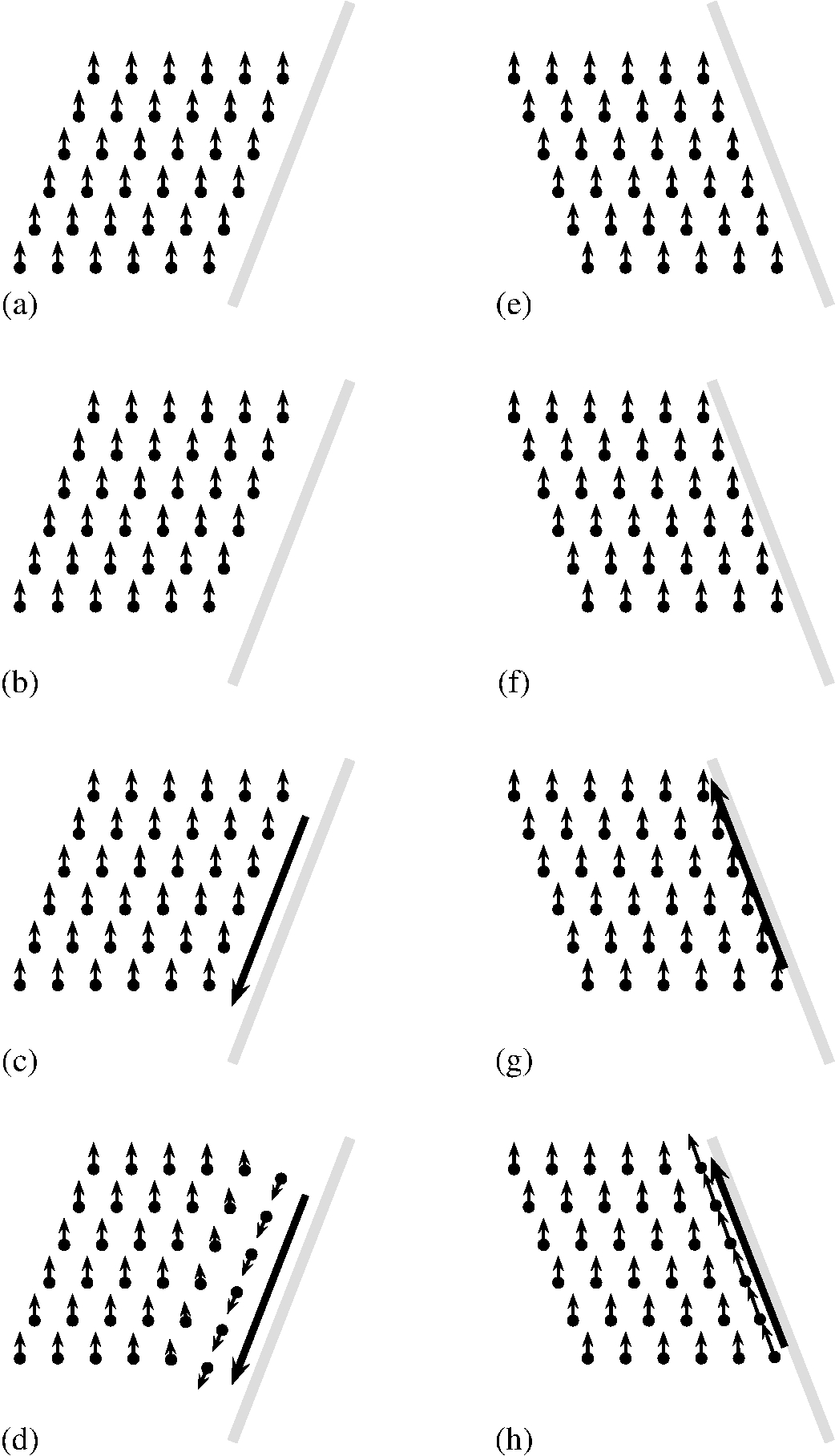Outreach
Press
Research
Jobs
Publications
Teaching
Stout beer
See also bubble nucleation in stout beers: link.

|
One of the mysteries of stout beers is the sinking bubbles observed while a recently poured pint is settling. Our research, arXiv:1205.5233, completes the explanation of this phenomenon. We show that in fact stout beer bubbles may sink or rise: which they do depends entirely on the shape of the glass! |
One of the distinctive features of stout beers is the sinking bubbles observed while the head forms in a recently poured pint (Wikipedia, video). Previous experimental and simulation work has demonstrated that this is due to a downwards current close to the edge of the pint glass (the current and bubbles move up in the centre of the glass). The small size of the bubbles found in stout beer allows them to be dragged downwards. Our research explains why this current forms and the role played by the shape of the glass in promoting it. This resolves the final mystery associated with this puzzling phenomenon.
 |
(a,b,c,d) Glass slopes inwards: sinking bubbles. (a) Buoyant bubbles begin to rise. (b) This leaves denser, bubble free, beer at the wall. (c) The heavier beer flows downwards under gravity. (d) Bubbles are dragged downwards by the current. (e,f,g,h) Glass slopes outwards: rising bubbles. (e) Buoyant bubbles rise. (f) Bubbles accumulate at the wall, reducing the density of the beer. (g) The lighter beer rises due to its buoyancy. (h) Bubbles are observed to rise. |
|||||||||

|
The research was led by Prof. Eugene Benilov from the Department of Mathematics and Statistics at the University of Limerick. |

|
Cathal
Cummins is a graduate student at the University of
Limerick. Cathal worked on this project while a student on the
University of Limerick's
taught MSc in Mathematical
Modelling. |

|
William Lee is a junior
lecturer in applied mathematics at
the University of Limerick and a member
of the
MACSI research group. |
In the media
- Discoblog, Discover Magazine. Why do bubbles in Guinness sink?.
- Physics Central. Best Kind of Fluid Dynamics: Beer.
- Johnathan Gray, Evening Herald, p. 25 (30.5.2012). Mystery of Guinness bubbles is solved.
- Claire O'Connell, Irish Times, p. 12, (31.5.2012). The mystery at the heart of the perfect pint.
- Michael Harper, RedOrbit.com. Fun With Beer And Mathematics.
- Phys.org. Irish mathematicians explain why Guinness bubbles sink.
- Jenny McCudden, Irish sun (30.5.2012) p 14. Guinness fizz riddle gets sunk.
- Jason Palmer, BBC news online. Falling stout bubbles explained.
- MIT Technology Review. Irish Mathematicians Solve The Guinness Sinking Bubble Problem.
- World Science. Cold case solved? Study probes riddle of sinking beer bubbles.
Previous research
- Experimental research on sinking bubbles was carried out by R. J. Zare (Stanford) and A. J. Alexander (Edinburgh). BBC news, Guardian.
- Computational fluid dynamics simulations of sinking bubbles were carried out by C. Fletcher and colleagues (New South Wales). ScienceNOW, Fluent News (pdf, see page 13).
- The effect responsible for the sinking bubbles is known as the Boycott effect and was first observed in the sedimentation of red blood cells. (Video, glitter.)
Acknowledgements

|
We would like to thank Science Foundation
Ireland, SFI for making this research
possible by |
|
|


